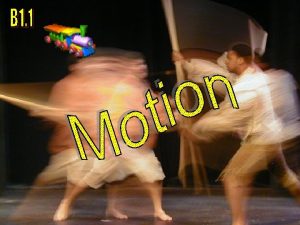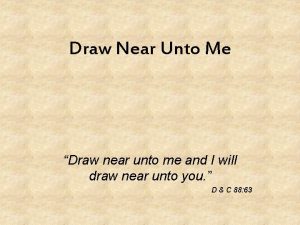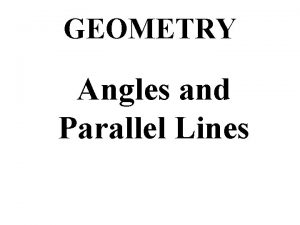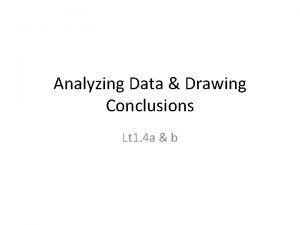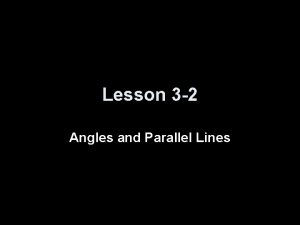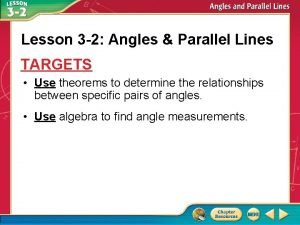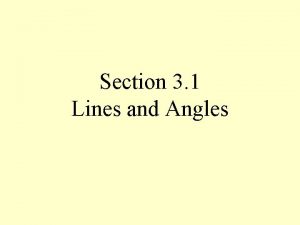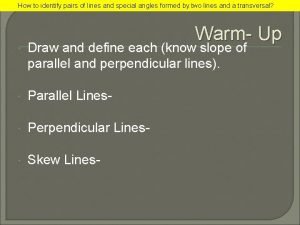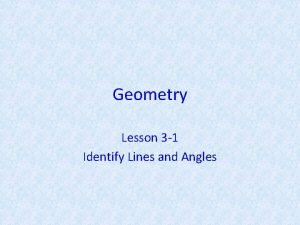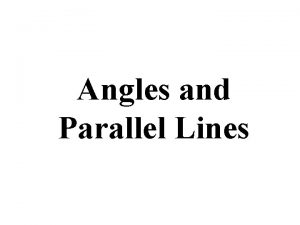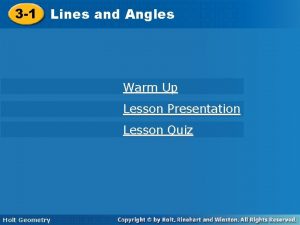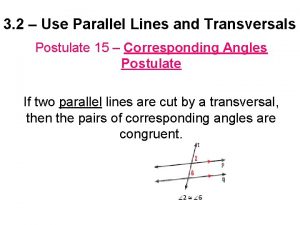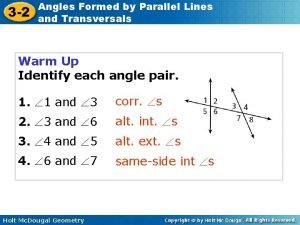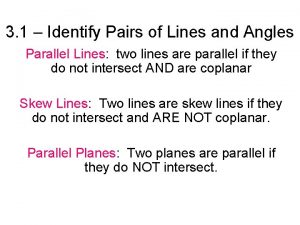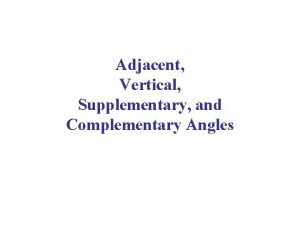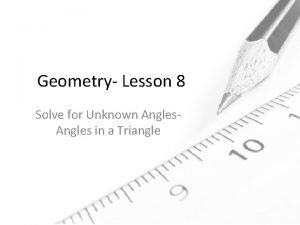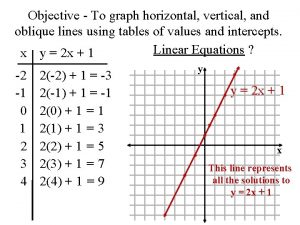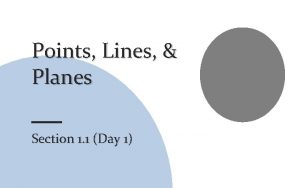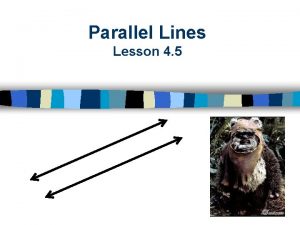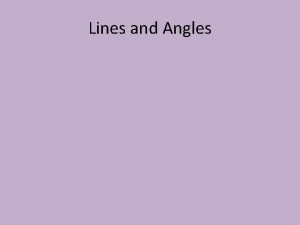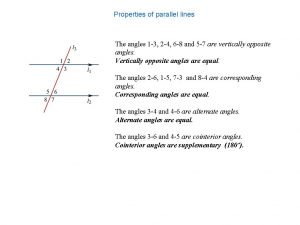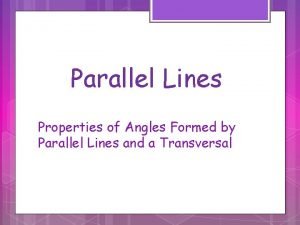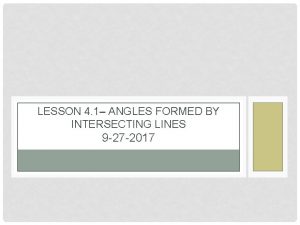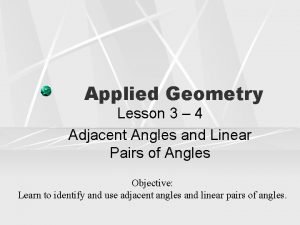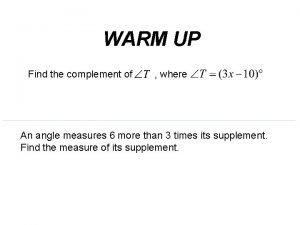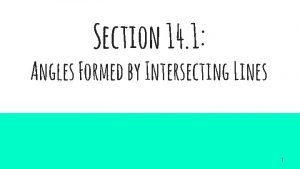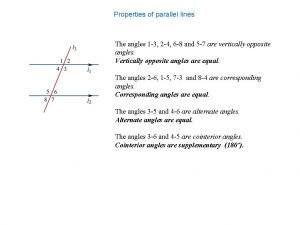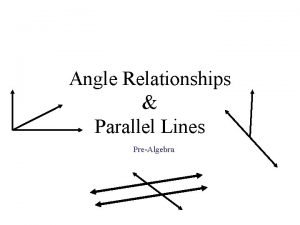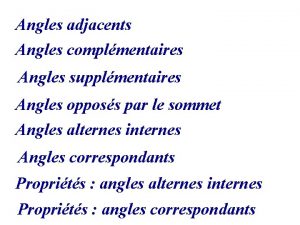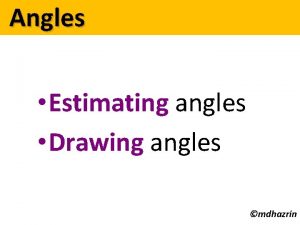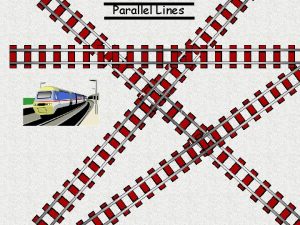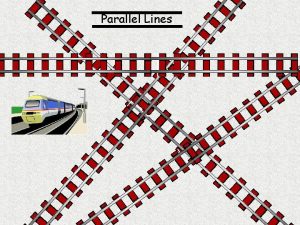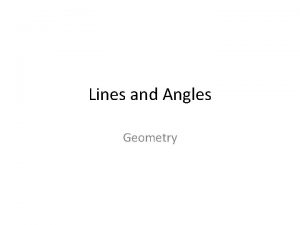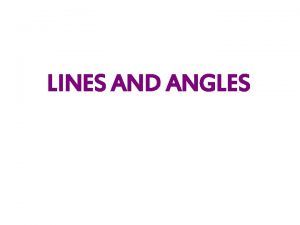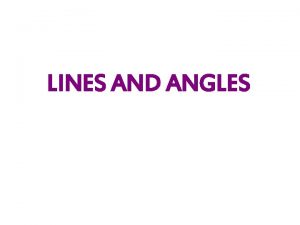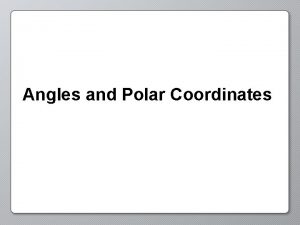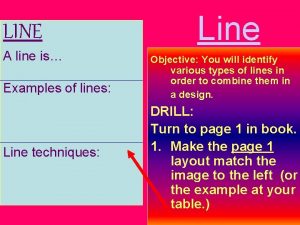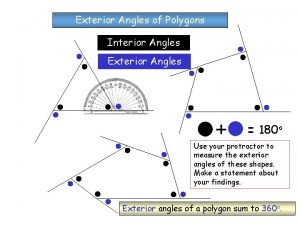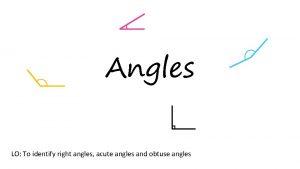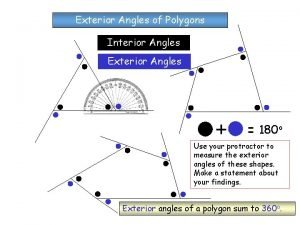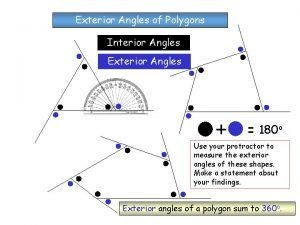LINES AND ANGLES DRAW A LINE CAN YOU
























































- Slides: 56


LINES AND ANGLES

DRAW A LINE CAN YOU DRAW A LINE SEGMENT

DIFFERENTIATE BETWEEN A LINE AND LINE SEGMENT I AM MADE UP POINTS. I HAVE NO END POINTS, I EXTENDED INDEFINETLY ON BOTH SIDES LINE I AM MADE UP OF POINTS. I HAVE TWO END POINTS. I HAVE DEFINETE LENGTH LINE SEGMENT

ANGLES TWO RAYS WITH A COMMON END POINTS FORM AN ANGLIE TWO RAYS ARE THE ARMS OF THE ANGLE. COMMON ENDPOINT IS THE VERTEX OF THE ANGLE

Types Of Angles There are four main types of angles. Right angle Acute angle A B Obtuse angle A A C B B C Straight angle A B C C

Acute angle: An angle whose measure is less than 90 degrees. Acute Angle

Examples Of Acute Angle

Right angle: An angle whose measure is 90 degrees. Right Angle

Examples Of Right Angle

Obtuse angle: An angle whose measure is greater than 90 degrees. Obtuse Angle

Examples Of Obtuse Angle

Straight angle: An angle whose measure is 180 degrees. Straight Angle

Examples Of Straight Angle

Pairs Of Angles : Types Adjacent angles • Vertically opposite angles • Complimentary angles • Supplementary angles • Linear pairs of angles •

Adjacent Angles Two angles that have a common vertex and a common ray are called adjacent angles. A A D B Common vertex E C D B Common ray C F Adjacent ABDadjacent and DBC ABC and Angles DEF are not angles Adjacent angles do not overlap each other.

Adjacent angles are “side by side” and share a common ray. 45º 15º

These are examples of adjacent angles. 80º 45º 35º 55º 85º 130º 20º 50º

These angles are NOT adjacent. 100º 50º 35º 55º 45º

Complimentary Angles If the sum of two angles is 900, then they are called complimentary angles. A D 600 B E C 300 F ABC and DEF are complimentary because ABC + DEF 600 + 300 = 900

Contd…. If the sum of two angles is more than 900 or less than 900, then they not complimentary angles. D p 700 E F Q 300 R ÐDEF and ÐPQR are not complimentary because DEF + PQR 700 + 300 = 1000

Supplementary Angles If the sum of two angles is 1800 then they are called supplementary angles. A P 1000 Q 800 R B C PQR and ABC are supplementary, because PQR + ABC 1000 + 800 = 1800

Contd…. If the sum of two angles is more than 1800 or less than 1800, then they are not supplementary angles. D A 1100 B 800 C E F DEF and PQR are not supplementary because ABC + DEF 1100 + 800 = 1900

Linear Pair Of Angles Two adjacent supplementary angles are called linear pair of angles. A 600 C 1200 P APC + APD 600 + 1200 = 1800 D

WHEN TWO LINES INTERSECT THEY MAKE TWO PAIRS OF VERTICALLY OPPOSITE ANGLES 75º 105º 75º VERTICALLY OPPOSITE ANGLES ARE OPPOSITE TO ONE ANOTHER VERTICALLY OPPOSITE ANGLES ARE EQUAL

Name the vertically opposite angles and adjacent angles in the given figure: C A P B D Vertically opposite angles: APC and BPD Adjacent angles: APC and CPD APB and BPD

Directions: Identify each pair of angles as vertical, supplementary, complementary, or none of the above.

#1 120º 60º

#1 120º 60º Supplementary Angles

#2 30º 60º

#2 30º 60º Complementary Angles

#3 75º

#3 Vertical Angles 75º

#4 40º 60º

#4 40º 60º None of the above

#5 60º

#5 60º Vertical Angles

#6 135º 45º

#6 135º 45º Supplementary Angles

#7 25º 65º

#7 25º 65º Complementary Angles

#8 90º 50º

#8 90º 50º None of the above

Directions: Determine the missing angle.


#1 135º 45º


#2 25º 65º


#3 35º


#4 130º 50º


#5 140º


#6 50º 40º
 Property of vertically opposite angles
Property of vertically opposite angles If you think you can you can poem
If you think you can you can poem Unsupported enamel definition
Unsupported enamel definition Motion occurs when there is a change in speed.
Motion occurs when there is a change in speed. Draw unto me and i will
Draw unto me and i will If you can imagine it you can achieve it
If you can imagine it you can achieve it If you cant measure it you can't manage it quote
If you cant measure it you can't manage it quote If you can't measure it, you can't manage it
If you can't measure it, you can't manage it Can't manage what you don't measure
Can't manage what you don't measure Vertikale kennzahlen
Vertikale kennzahlen Line vw and line xy are parallel lines drawing
Line vw and line xy are parallel lines drawing Which two angles occupy corresponding positions
Which two angles occupy corresponding positions Two nonadjacent angles formed by 2 intersecting lines
Two nonadjacent angles formed by 2 intersecting lines Intersecting chords
Intersecting chords Draw the line at animal cruelty
Draw the line at animal cruelty How to draw conclusions from data
How to draw conclusions from data A plain scale of 1cm=5m and show on it 37m
A plain scale of 1cm=5m and show on it 37m Nothing gold can stay simile
Nothing gold can stay simile Tonight i can write pablo neruda analysis
Tonight i can write pablo neruda analysis 3-2 properties of parallel lines
3-2 properties of parallel lines Lesson 7-1 parallel lines and angle relationships
Lesson 7-1 parallel lines and angle relationships Chapter 3-2 angles and parallel lines
Chapter 3-2 angles and parallel lines Geometry
Geometry 3-1 lines and angles
3-1 lines and angles Identify pairs of lines and angles worksheet
Identify pairs of lines and angles worksheet Lesson 1 lines and angles
Lesson 1 lines and angles Coinciding lines
Coinciding lines 3-1 lines and angles
3-1 lines and angles Parallel lines
Parallel lines Use parallel lines and transversals assignment
Use parallel lines and transversals assignment 3-2 angles formed by parallel lines and transversals
3-2 angles formed by parallel lines and transversals Pairs of lines and angles
Pairs of lines and angles Worksheet angles on a straight line
Worksheet angles on a straight line Draw a conclusion example
Draw a conclusion example Vertical angles
Vertical angles Find the unknown (labeled) angle in each figure
Find the unknown (labeled) angle in each figure Horizontal vertical graph
Horizontal vertical graph You can tell harris about it just ____(easily) as i can.
You can tell harris about it just ____(easily) as i can. You can tell harris about it just ____(easily) as i can
You can tell harris about it just ____(easily) as i can Kinds of degree
Kinds of degree Nothing is impossible if you believe
Nothing is impossible if you believe How to draw use case diagram in draw.io
How to draw use case diagram in draw.io Worksheet 1-1 points lines and planes
Worksheet 1-1 points lines and planes Lines are lines that never touch and are coplanar.
Lines are lines that never touch and are coplanar. Convention of lines
Convention of lines Define parallel lines and intersecting lines
Define parallel lines and intersecting lines Complementary and supplementary angles formula
Complementary and supplementary angles formula Angle properties of parallel lines
Angle properties of parallel lines Angles formed by parallel lines
Angles formed by parallel lines Two non parallel lines cut by a transversal
Two non parallel lines cut by a transversal Properties of angles formed by intersecting lines
Properties of angles formed by intersecting lines How to tell if angles are adjacent
How to tell if angles are adjacent Two nonadjacent angles formed by 2 intersecting lines
Two nonadjacent angles formed by 2 intersecting lines Intersecting lines def
Intersecting lines def Parallel lines angle property
Parallel lines angle property Angles & lines unit warm ups
Angles & lines unit warm ups Adjacent angles in parallel lines
Adjacent angles in parallel lines



